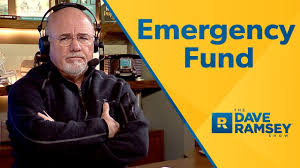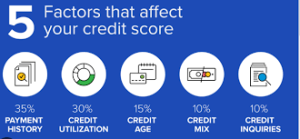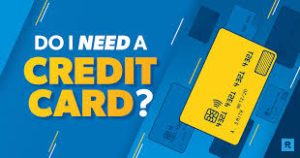Picture this: It’s 3 AM, and you’re staring at an unexpected car repair bill that costs $1,500. Your checking account is practically crickets, and payday feels light-years away. This is the exact financial nightmare the Dave Ramsey emergency fund exists to prevent.
As a millennial navigating today’s economic rollercoaster, I’ve learned that financial security isn’t just a luxury—it’s a survival skill.
Dave Ramsey’s emergency fund strategy isn’t just another financial theory; it’s a lifeline for a generation facing unprecedented economic challenges. From gig economy uncertainties to crushing student loan debt, millennials need a robust financial safety net more than ever.
This guide will walk you through transforming your financial vulnerability into rock-solid security, one dollar at a time.
Table of Contents
Understanding the Dave Ramsey Emergency Fund Concept
The Dave Ramsey emergency fund is more than just a savings account—it’s a financial force field designed to protect you from life’s unexpected curveballs. At its core, this strategy is about creating a financial buffer that provides peace of mind and practical protection against financial emergencies.
Key components of the emergency fund strategy include:
- A starter emergency fund of $1,000 as your initial financial safety net
- Long-term goal of saving 3-6 months of living expenses
- Creating a financial cushion that prevents debt accumulation
- Providing psychological relief from financial stress
- Building financial discipline and security
Why is this approach so powerful? Unlike traditional savings methods, the Dave Ramsey emergency fund focuses on rapid, purposeful saving with clear, achievable milestones. It’s not about perfection—it’s about progress.
The Financial Landscape for Millennials
Let’s face it: millennials are playing financial chess in a world that feels more like financial Russian roulette. Our generation faces challenges that previous generations never imagined:
- Average student loan debt of $37,000 per graduate
- Stagnant wages compared to rising living costs
- Increasingly unpredictable job markets
- Higher costs of healthcare, housing, and daily living
- Gig economy and contract work with limited job security
These challenges make the Dave Ramsey emergency fund strategy not just helpful, but essential. It’s a lifeline in an economic landscape that can feel more like a minefield than a career path.
Step-by-Step Guide to Building Your First $1,000 Emergency Fund
Building your initial $1,000 emergency fund might seem impossible, but it’s absolutely achievable with the right strategy. Think of this as your financial boot camp—challenging, but transformative.
30-Day $1,000 Emergency Fund Challenge
| Week | Strategy | Potential Savings |
| 1 | Expense Audit | $200-$300 |
| 2 | Side Hustle | $250-$400 |
| 3 | Sell Unused Items | $200-$350 |
| 4 | Temporary Lifestyle Cut | $150-$250 |
Practical steps to kickstart your Dave Ramsey emergency fund:
- Conduct a ruthless expense audit
- Start a side hustle (food delivery, freelancing, online surveys)
- Sell unused items on Facebook Marketplace or eBay
- Cut subscription services temporarily
- Pick up extra shifts or overtime
- Use cashback apps and savings challenges
Pro Tip: Open a separate savings account specifically for your emergency fund to avoid temptation and track progress easily.
Scaling Up: From $1,000 to 3-6 Months of Expenses
Once you’ve conquered the initial $1,000, it’s time to level up your Dave Ramsey emergency fund strategy. This phase is about systematic, consistent growth.
Key scaling strategies:
- Automate savings with direct deposit splits
- Use apps that round up purchases and save the difference
- Create a dedicated savings percentage from each paycheck
- Explore high-yield savings accounts
- Set clear, incremental savings goals
- Celebrate milestones to maintain motivation
Millennials’ Unique Savings Challenges and Solutions
Our generation requires innovative approaches to savings. Traditional advice doesn’t always cut it when you’re juggling multiple income streams and unpredictable work situations.
Innovative saving approaches:
- Use apps like Digit or Acorns for automated micro-savings
- Leverage gig economy platforms for additional income
- Negotiate freelance rates and side hustle compensation
- Explore passive income opportunities
- Utilize zero-based budgeting techniques
- Take advantage of employer matching retirement programs
When and How to Use Your Emergency Fund
Not every unexpected expense qualifies as an emergency. The Dave Ramsey emergency fund is for true financial crises, not minor inconveniences.
True emergency definitions:
- Major medical expenses
- Critical car repairs
- Unexpected job loss
- Essential home repairs
- Unavoidable critical expenses
Non-emergency expenses to avoid using the fund:
- Vacation
- New electronics
- Routine car maintenance
- Impulse purchases
- Expected expenses
Common Millennial Emergency Fund Mistakes to Avoid
Learning from others’ missteps can save you significant financial heartache.
Critical mistakes to sidestep:
- Treating the emergency fund as a secondary savings account
- Failing to replenish after using emergency funds
- Not adjusting the fund for inflation and life changes
- Inconsistent saving habits
- Using funds for non-emergencies
Conclusion
Your financial future is not predetermined. The Dave Ramsey emergency fund strategy provides a roadmap from financial vulnerability to resilience. It’s not about having a perfect plan—it’s about taking consistent, intentional steps toward financial security.
Skale Money Key Takeaways
- Emergency funds provide critical financial protection
- Start small, but start now
- Automation is your friend
- Consistently review and adjust your strategy
- Your emergency fund grows with your financial maturity
FAQ
How quickly can I build a $1,000 emergency fund?
With dedicated effort, you can build $1,000 in 30-90 days by combining expense cutting and additional income sources.
What counts as a true emergency?
Genuine emergencies are unexpected, necessary expenses that impact your basic living conditions or ability to work.
Should I invest while building my emergency fund?
Initially, focus on building your emergency fund. Once you have 3-6 months of expenses saved, you can start exploring investment options.
How do I stay motivated during the saving process?
Set small, achievable milestones, track your progress visually, and reward yourself (inexpensively) for meeting savings goals.
What if my income is inconsistent?
For gig workers or freelancers, aim to save a percentage of each payment rather than a fixed amount. Adjust your strategy as your income fluctuates.
Remember, your Dave Ramsey emergency fund is more than a financial tool—it’s your personal insurance policy against life’s uncertainties. Start today, stay consistent, and watch your financial confidence grow.
![]()




